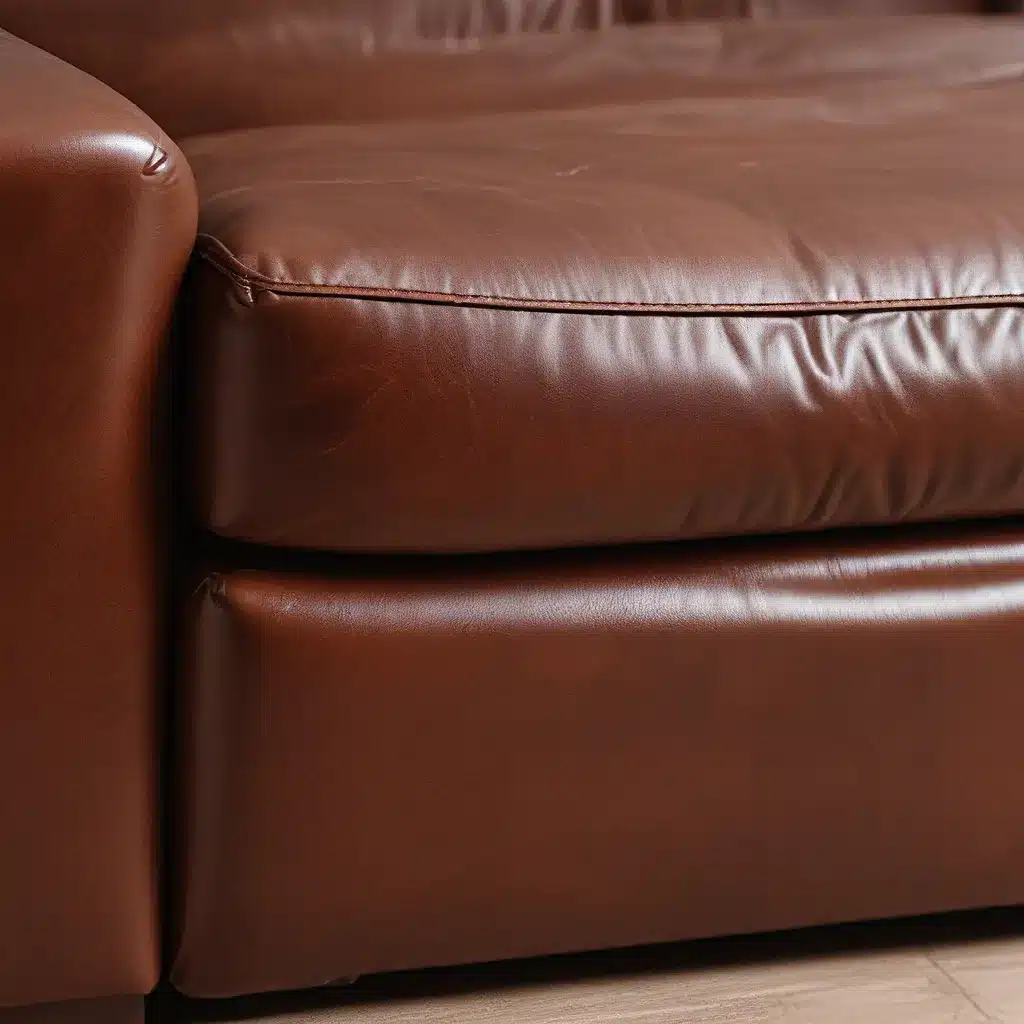As someone who’s passionate about furniture restoration, I’ve learned that caring for leather pieces requires a delicate touch. Over the years, I’ve experimented with a variety of leather conditioners, and let me tell you – the results can be quite surprising.
The Dilemma of Leather Care
Leather furniture is a real investment, both in terms of money and sentimental value. Whether it’s an heirloom passed down through generations or a sleek, modern statement piece, we all want to keep our leather looking its best. But let’s be honest – leather can be a real diva when it comes to maintenance.
One of the biggest challenges I’ve faced is finding the right balance between moisturizing the leather and avoiding over-conditioning. Over the years, I’ve witnessed the unfortunate consequences of using the wrong products – from sticky, greasy surfaces to leather that becomes dried out and cracked. It’s a delicate dance, and one that requires a keen understanding of the material.
Exploring Leather Conditioner Options
As I delved deeper into the world of leather care, I discovered a vast array of conditioners, each promising to rejuvenate and protect my precious pieces. From natural oils to synthetic formulations, the options can be overwhelming. And let’s not forget the age-old debate – is mineral oil good or bad for leather?
After countless hours of research and hands-on experimentation, I’ve come to the conclusion that there’s no one-size-fits-all solution. Different leather types and conditions require different approaches. For example, a supple, high-quality leather may respond better to a lightweight, natural-based conditioner, while a heavily worn or damaged piece might benefit from a richer, more nourishing formula.
The Power of Natural Oils
One of the standout discoveries in my leather restoration journey has been the remarkable effects of natural oils. Brands like Furniture Clinic and Leather Honey have gained a loyal following for their plant-based conditioners, which harness the power of ingredients like linseed oil, olive oil, and beeswax.
These natural formulas work by deeply penetrating the leather, restoring its natural oils and helping to prevent drying and cracking. What’s more, they tend to leave a beautiful, satin-like finish that enhances the natural character of the material. And the best part? They’re often more affordable and eco-friendly than their synthetic counterparts.
The Mineral Oil Debate
Now, let’s address the elephant in the room – the ongoing debate about mineral oil and its effects on leather. I’ve come across numerous opinions on this topic, with some experts claiming it’s a surefire way to damage and degrade leather, while others swear by its moisturizing and protective properties.
After delving into the forums and discussions on Leatherworker.net, I’ve come to the conclusion that the impact of mineral oil largely depends on the specific type of leather and its condition. For heavily worn or cracked leather, mineral oil can actually help to temporarily swell the fibers and restore some of the lost flexibility. However, for high-quality, well-maintained leather, it may ultimately do more harm than good by leaving a greasy, splotchy appearance.
Ultimately, I believe the best approach is to experiment and find what works best for your particular leather pieces. Start with a small, inconspicuous area and observe the results before committing to a full application. And remember, even the most effective conditioner is only as good as the proper application technique – be sure to follow the manufacturer’s instructions carefully.
Maintaining Leather Furniture Over Time
Restoring leather furniture is an ongoing process, not a one-time fix. Regular conditioning and care is essential to keep your pieces looking their best for years to come. I recommend setting a routine maintenance schedule, perhaps every 6 months to a year, depending on the level of use and exposure your furniture experiences.
When it comes to maintaining your leather, be mindful of factors like sunlight, humidity, and abrasion. Protect your furniture from direct sunlight, which can cause fading and drying, and consider using a leather protectant to create a barrier against everyday wear and tear.
And remember, Adams Cleaning Services is always here to help if you need a little extra TLC for your beloved leather furniture. Our team of experts can provide a deep clean and professional conditioning treatment to breathe new life into your pieces.
Embracing the Patina of Leather
As I’ve learned through my leather restoration journey, sometimes the best approach is to simply embrace the natural patina and character that develops over time. Leather is a living, breathing material, and each scratch, scuff, and discoloration tells a story. By accepting and highlighting these unique features, we can celebrate the history and personality of our cherished furniture.
So, the next time you look at your well-worn leather sofa or armchair, instead of seeing flaws, try to see the beautiful, one-of-a-kind piece that it has become. With the right care and a bit of elbow grease, you can help preserve the timeless appeal of your leather furniture for generations to come.







